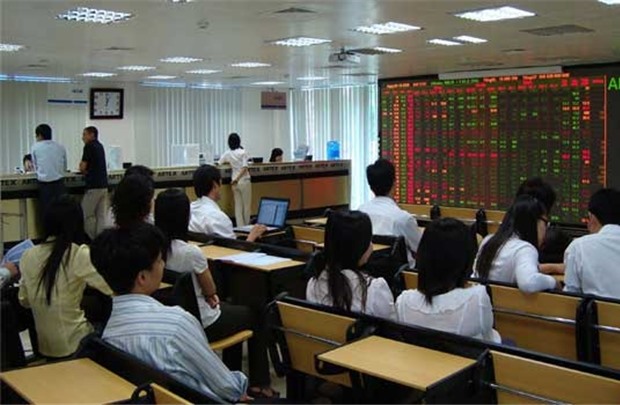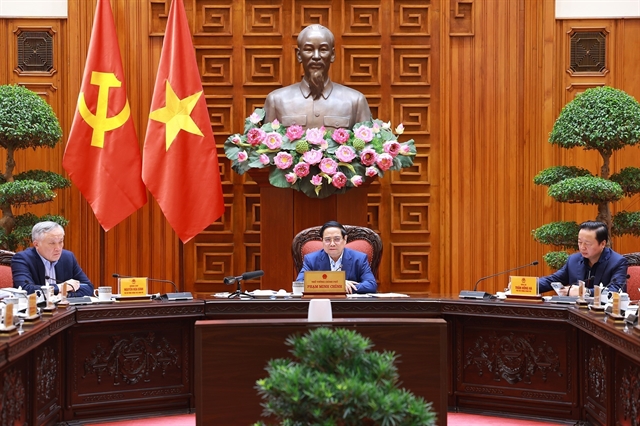 Economy
Economy

Foreign traders have extended their net selling streak to three consecutive weeks, yet this selling showed no sign of ending, which could derail the market this week.
 |
| Foreign traders have extended their net selling streak to three consecutive weeks, yet this selling showed no sign of ending, which could derail the market this week. — Photo doanhnhansaigon.vn |
HÀ NỘI — Foreign traders have extended their net selling streak to three consecutive weeks, yet this selling showed no sign of ending, which could derail the market this week.
Foreign investors were responsible for total net sells of 36.5 million shares, worth a combined VNĐ685.5 billion (US$30.2 million) for the week on the two national stock exchanges, according to data from stockbiz.vn.
Investors shrugged off mainly large-cap stocks on the HCM Stock Exchange for VNĐ615 billion, lifting total net sell value in the last three weeks to over VNĐ2 trillion, which weighed on the stock index.
Meanwhile, the benchmark VN-Index on the HCM Stock Exchange decreased 1.6 per cent for the week, to 665.1 points. It lost 1 per cent for the month ending December 2.
Their most-sold list included VinGroup (VIC), Masan Group (MSN), Phú Mỹ Fertiliser (DPM), Sài Gòn Securities Inc (SSI), Vinamilk (VNM), lenders BIDV (BID), Sacombank (STB) and insurer Bảo Việt Holdings (BVH), all among the top 30 largest shares by market capitalisation.
On the Hà Nội Stock Exchange, foreign net sell value increased by seven fold to reach VNĐ71 billion. This is the fifth net selling week, for a total VNĐ123 billion.
The HNX-Index, meanwhile, increased 0.4 per cent for the week, ending Friday at 81.2 points.
According to BIDV Securities Co, foreign capital has shown signs of fleeing from emerging markets, after the US Federal Reserve signaled indications of possible rate hikes in December.
“Vietnam is one of the markets seeing foreign capital fleeing the most in the recent past, mainly driven by the unappealing prospects of exchange-traded funds and profit-taking activities of veteran investment funds in the country,” they wrote in the monthly review.
Further, the successful conclusion of OPEC’s meeting late on Wednesday, in which OPEC members decided to cut daily production for the first time in eight years by 1.2 million barrels per day, to a ceiling of 32.5 million barrels, failed to lift the market.
Big energy stocks, such as PV Gas (GAS), PetroVietnam Drillings and Wells Service (PVD), PetroVietnam Drilling Mud (PVC) and PetroVietnam Technical Services (PVS) rose briefly on Thursday, but declined again on Friday.
According to analysts at Viet Dragon Securities (VDS), OPEC’s decision will help balance the global oil market and push oil prices up to the equilibrium level in favor of Viet Nam’s oil industry, which is expected to reach $60 per barrel in the latter half of 2017.
Both Brent and West Texas Intermediate (WTI) crude settled at their highest levels since July 2015 after the OPEC agreement, Marketwatch reported. WTI crude scored a weekly gain of 12.2 per cent, closing Friday at $51.68 a barrel on the New York Mercantile Exchange.
Further, the Brent crude rose 12.9 per cent for the week to settle at $54.46 per barrel.
For local energy stocks, VDS analysts said positive impacts would not last long when fundamental factors, such as revenues and profit prospects of local oil and gas companies in 2017 remained in the shadows.
Analysts at HCM City Securities Corp agreed that OPEC’s decision would not help improve profits of domestic oil companies much, since if oil prices went over $60 per barrel next year, the US would raise production of shale oil again.
After two years of suffering low prices, domestic oil producers have been under pressure to trim their exploration activities. HSC analysts reported they found new oil exploration programmes among local oil companies in 2017.
“Earnings the prospects of big contractors, such as PetroVietnam Drillings and Wells Service (PVD) and PetroVietnam Technical Services (PVS), could not improve, even when oil prices rose to $55-$60 per barrel in 2017,” they wrote in a report. — VNS




